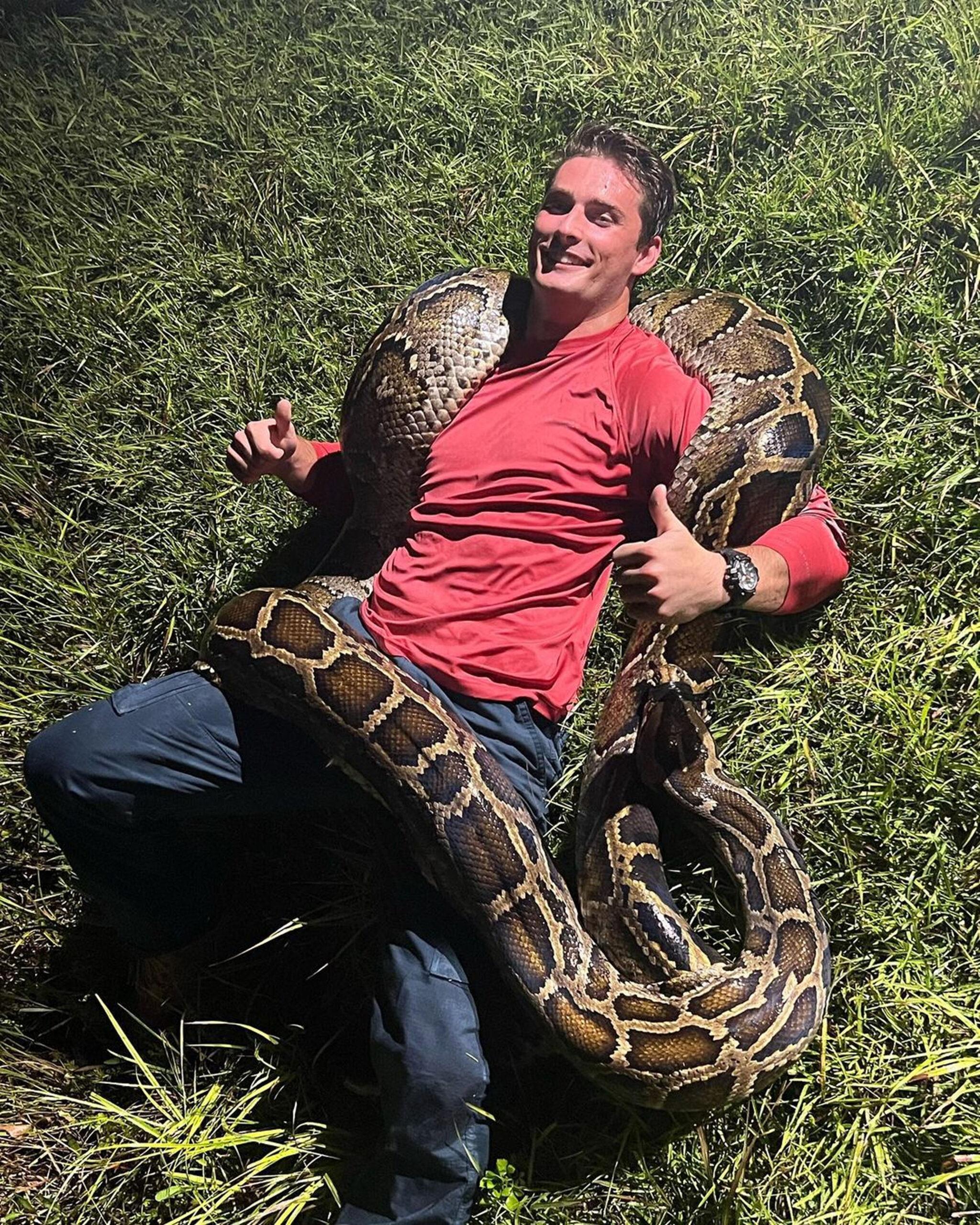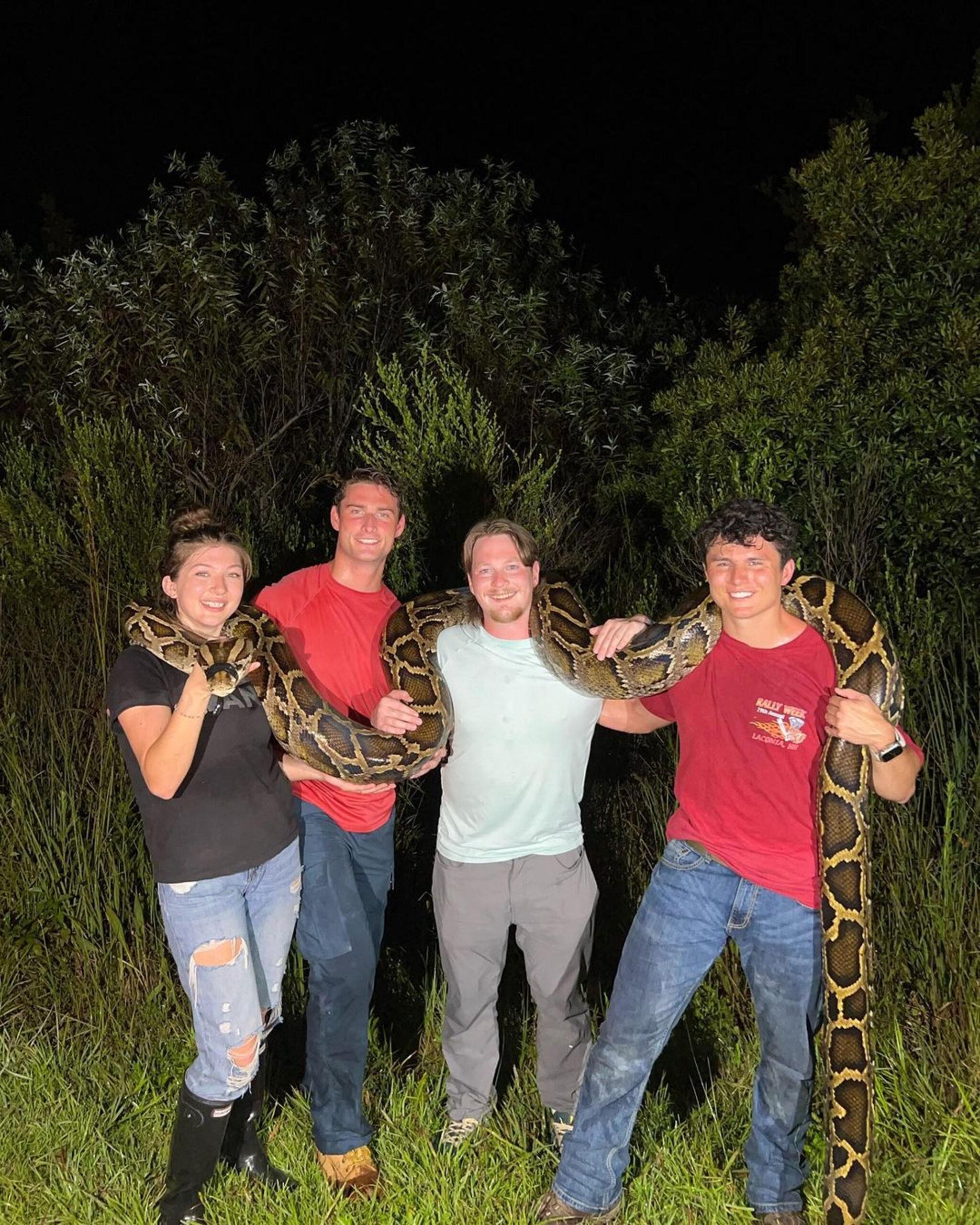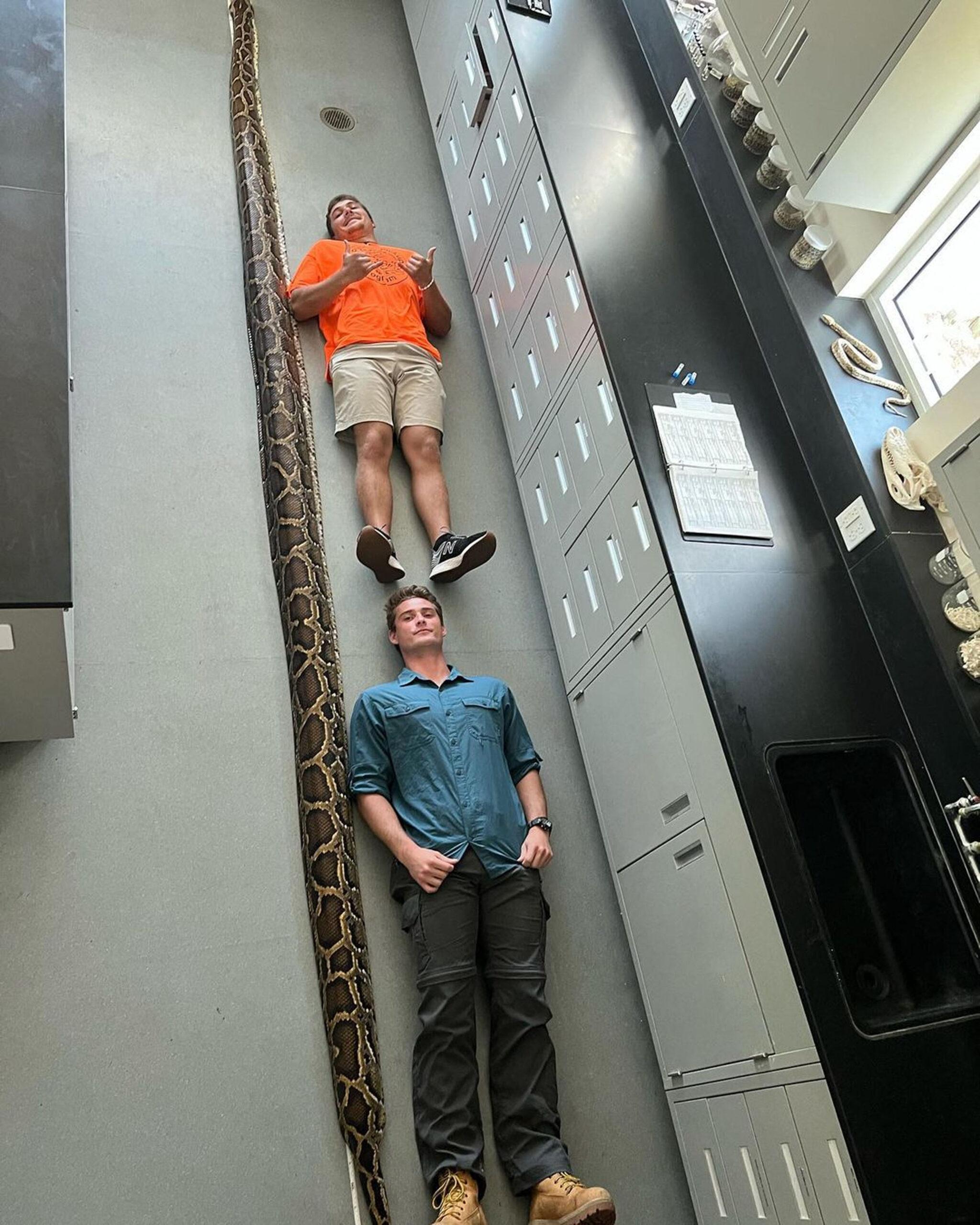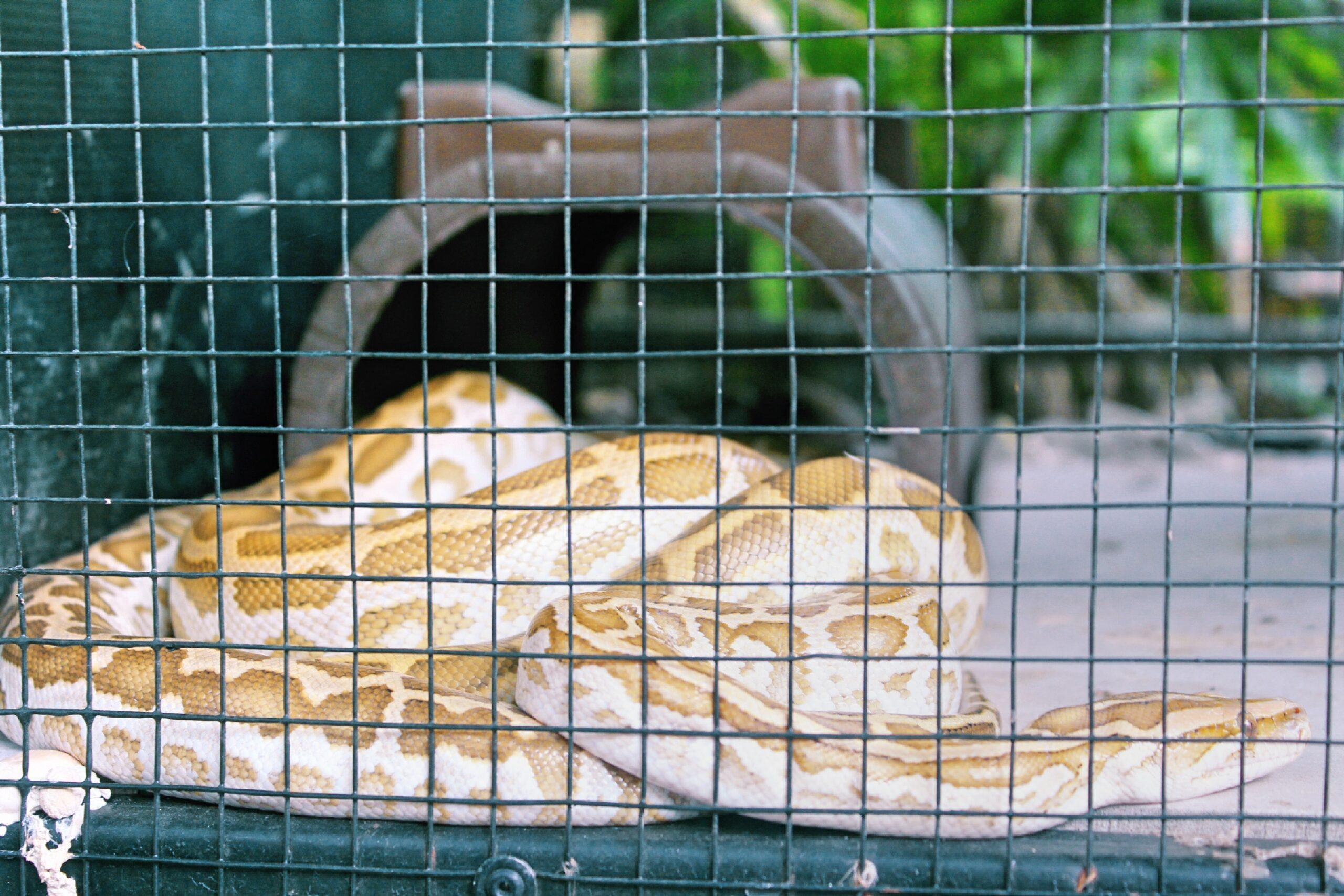
Massive Pile Of Invasive Burmese Pythons Found Mating In Florida: 'A Win For Native Wildlife'
By Favour Adegoke on March 19, 2024 at 9:45 PM EDT
Florida wildlife experts encountered a massive gathering of Burmese pythons, with a 7-foot-wide, 500-pound pile found in a Naples marsh. Implants in male "scout snakes" aided in tracking them.
Despite efforts, eradicating the pythons is deemed unlikely. Pythons were first spotted in the 1970s around Everglades National Park, leading to population growth and ecological disruption.
500-Pound Pile Of Invasive Burmese Pythons Discovered In Florida
On February 21, Florida wildlife experts stumbled upon a remarkable discovery: a colossal gathering of invasive Burmese pythons.
According to reports from the Miami Herald, these non-native snakes, which have been wreaking havoc on Florida's ecosystem for over four decades, were found nestled in a marsh near Naples.
Experts reportedly found two clusters of mating Burmese pythons, one of which formed an incredible 7-foot-wide pile weighing 500 pounds, a first for the Conservancy of Southwest Florida.
A total of eleven pythons were extracted from these clusters, including one specimen exceeding an astounding 16 feet in length.
The Reptiles Were Located Using Implants Embedded In 'Scout Snakes'

According to the outlet, researchers successfully located the pythons using innovative implants embedded in male "scout snakes." These implants emitted signals that allowed experts to track the reptiles in remote areas once released.
Conservancy biologist Ian Bartoszek emphasized the ongoing efforts to manage invasive species, stating, "For 10 years, we've been catching and putting them [Burmese pythons] down humanely. You can't put them in zoos and send them back to Southeast Asia."
"Invasive species management doesn't end with rainbows and kittens. These are remarkable creatures, here through no fault of their own. They are impressive animals, good at what they do," he added, per People magazine.
Bartoszek described the discovery as a positive outcome, noting: "It's probably most people's worst nightmare. For us, it's a good day. It's a win for native wildlife."
Declining Native Wildlife Population Linked To Invasive Burmese Pythons

As per the Florida Museum, Burmese pythons, originally native to parts of Asia, were introduced to Florida in the 1980s.
The Nature Conservancy suggests that the first Burmese python found in Florida's Everglades in 1979 likely originated as a pet that either escaped or was released into the wild.
According to the non-profit, "Today, after years of breeding, tens of thousands of the snakes inhabit the mainland around Everglades National Park, feasting on rare and endangered species."
The U.S. Geological Survey also highlighted the pythons' impact on native wildlife, noting that "Pythons compete with native wildlife for food, which includes mammals, birds, and other reptiles."
The agency explained that declines in mammal populations, particularly in Everglades National Park, have been attributed to Burmese pythons, as "populations of raccoons had declined 99.3 percent, opossums 98.9 percent and bobcats 87.5 percent since 1997."
Additionally, marsh rabbits, cottontail rabbits, and fox populations in Florida have vanished during this time, per the USGS.
The Reptiles Eradication In Southern Florida Deemed 'Likely Impossible'

In a study by the U.S. Geological Survey, researchers suggest that the "eradication of pythons in southern Florida is likely impossible" due to their rapid spread throughout the state.
The paper, titled "Burmese Pythons in Florida: A Synthesis of Biology, Impacts, and Management Tools," analyzed over 250 research initiatives spanning three decades to assess the invasive species' presence in Florida.
Initially spotted in the 1970s around Everglades National Park, these sightings were dismissed as isolated incidents of "individual escapes or releases" until the 1990s and 2000s, when evidence of a reproducing python population emerged, solidifying their status as an established "invasive species."
"In the four decades since the first individual was recorded, the python population has grown and spread, consuming native wildlife and altering the food web in the Everglades," the U.S. Geological Survey paper stated, per People.
Hunter Recounts Python Capture: 'It Took Everything We Had To Keep Her Pinned Down'

Conservationist Mike Elfenbein, accompanied by his son Cole, 17, encountered the reptile while on a python hunting expedition at Big Cypress National Preserve. Describing the python as a "monster," Elfenbein emphasized its formidable size and strength, noting that "it was more than a snake."
Speaking to CBS News, Elfenbein shared that it took five individuals, Trey Barber, Carter Gavlock, Holden Hunter, himself, and his son, 45 minutes to wrestle the snake into submission. "We were strangers, But the five of us knew we had to capture this thing," he noted.
Mike recounted the intense struggle, stating: "It took everything we had to keep her pinned down. Even with five guys on top of her, she was able to lift us off the ground and keep moving."
He observed that the python displayed "zero fear" and instinctively entered a "fight or flight" mode, posing a formidable challenge to the captors as it tried to "constrict" them as they sat on its back.
